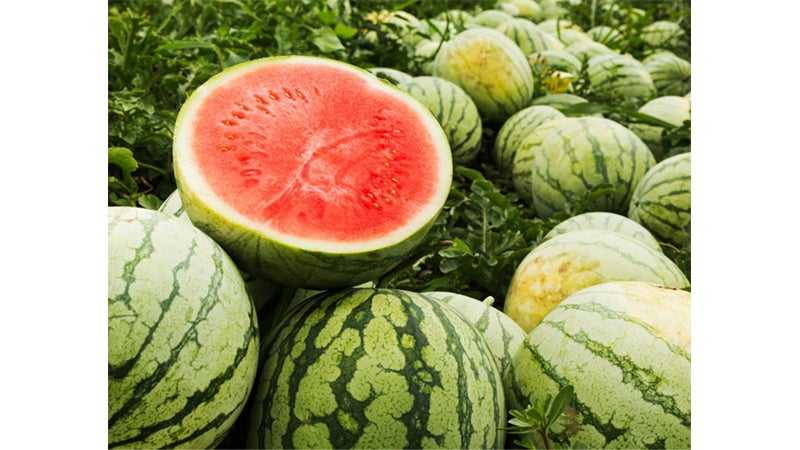Master Gardener: Three tips to pick out a sweet watermelon
Published 9:30 am Sunday, August 15, 2021
|
Getting your Trinity Audio player ready...
|
By Mary-Leigh Meyer
Texas A&M AgriLife Extension Service
I thought I would re-run my article from last summer on watermelons as most everyone enjoys a good cold slice in the heat of summer. Since the heat is getting to most of us, a good cold watermelon is just the thing to enjoy. On average, a watermelon is 92% water, which makes them so juicy. So, by eating them, you are re-hydrating yourself while enjoying a healthy snack.
A good watermelon is a staple, healthy summer snack, so it is important to know how to pick one, regardless of if you are at the grocery store or the local farmer’s market.
When it comes time to pick the perfect melon, people often make their selection based on three characteristics: presence of seeds or lack thereof, size and ripeness.
Determining ripeness requires some knowledge; how can you pick a ripe watermelon?
Pick the Right Variety – Choose a variety that is known for producing sweet watermelons. Crimson Sweet, Pony Yellow, and Sultan are all sweet varieties.
Find the yellow belly, or the field spot – Other than cutting open a watermelon to see the inside, the field spot is perhaps the best indicator of the ripeness. This spot on a melon shows where it was laying on the ground while attached to the vine. When ripe, this spot will change from white to yellow.
If the watermelon is ripe, the field spot should be a large, yellow patch on one side of the melon. If it is ripe, the color should be a creamy, almost butter-like yellow. The bigger the yellow belly and the creamier the color means the more time the melon spent ripening on the vine. However, if the spot is smaller or looks more white than yellow, then the melon may not be as ripe.
Tap the underbelly and listen for a deep sound – Another way to find a ripe watermelon is to lightly knock the outside with your knuckles. A ripe melon will have a deeper sound, as opposed to an over-ripe one that will have a more hollow or flat sound. A duller, more hollow sound can mean the flesh is starting to go soft and spoil.
Look for a dull and heavy watermelon – Although it may not be the most photogenic nor the easiest to carry to your car, the best watermelons will be dull in appearance and heavier than the rest. A shiny melon indicates the insides are under ripe.
Also, the best melon of the bunch will most likely be heavier than the rest. A heavier melon likely holds more water, which will make it juicier.
Storing watermelons – Store watermelons at temperatures from 60-70 degrees F. Temperatures below 50 degrees or above 90 degrees for extended periods will increase flesh (internal) deterioration. Once cut, refrigerate it in wedge form or in small chunks in plastic covered containers. Handle carefully to avoid rolling, bumping or dropping to prevent internal bruising.
Watermelon Lemonade Recipe – Blend chunks of peeled diced watermelon until pureed and strain into a pitcher. Add lemon juice, water and agave syrup to taste. Serve chilled over ice and garnish with a slice of watermelon and lemon. Enjoy!






